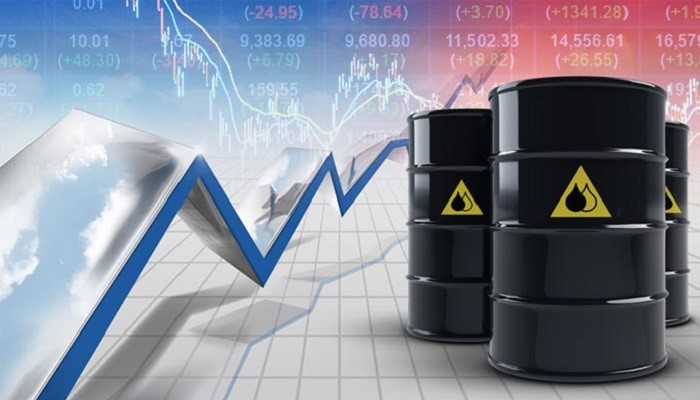The EUR/USD pair continues its decline for the second consecutive day, reaching near 1.0790 during the European session on Thursday. The US Dollar (USD) is gaining strength as Federal Reserve (Fed) Chair Jerome Powell dismisses expectations of rate cuts in March, providing support to US Treasury yields.
The Euro (EUR) faces challenges, especially after softer preliminary Consumer Price Index (CPI) data from Germany released on Wednesday. The subdued inflation figures have increased market expectations of an interest rate cut by the European Central Bank (ECB) in June. However, ECB Vice President Luis de Guindos indicated earlier in the week that the ECB would only consider rate cuts when there is confidence that inflation aligns with the central bank’s 2% goal.
German Consumer Price Index (CPI) for January showed a year-on-year increase of 2.9%, below the expected 3.3% from December’s reading of 3.7%. Monthly consumer inflation met expectations, rising to 0.2% from the previous reading of 0.1%. The Harmonized Index of Consumer Prices YoY increased 3.1%, lower than the previous figure of 3.8%. The inflation report for the entire Eurozone is scheduled for release at 10:00 GMT.
The US Dollar, measured by the US Dollar Index (DXY), continues to strengthen amid market expectations for the Fed’s upcoming decisions leading into the May meeting. CME’s FedWatch Tool indicates a probability of over 60% that the Fed will maintain interest rates between 5.25%-5.50% during the March meeting. Additionally, the probability of a quarter-point rate cut in May exceeds 60%.
Attention on Thursday will focus on significant economic indicators such as US Initial Jobless Claims, Nonfarm Productivity, and ISM Manufacturing PMI after the US ADP Employment Change reported an increase of 107K jobs for January, falling short of the expected 145K.
Technical analysis indicates that the EUR/USD pair is approaching major support at 1.0750. A break below this level could exert downward pressure, navigating the support zone near the psychological level of 1.0700.
On the upside, the pair might face immediate resistance at the psychological level of 1.0800. A breakthrough above this level could encourage bullish momentum, testing the 21-day Exponential Moving Average (EMA) at 1.0826, followed by major barriers at 1.0850 and the 23.6% Fibonacci retracement level at 1.0867.”
EUR/USD: Four-Hour Chart
-638423760123938829.png)
Euro price today
The table below shows the percentage change of Euro (EUR) against listed major currencies today. Euro was the weakest against the Japanese Yen.
| USD | EUR | GBP | CAD | AUD | JPY | NZD | CHF | |
| USD | 0.09% | 0.23% | 0.08% | 0.54% | -0.20% | 0.29% | 0.11% | |
| EUR | -0.10% | 0.12% | -0.05% | 0.45% | -0.27% | 0.19% | 0.01% | |
| GBP | -0.23% | -0.15% | -0.19% | 0.32% | -0.40% | 0.05% | -0.13% | |
| CAD | -0.08% | 0.04% | 0.18% | 0.50% | -0.22% | 0.24% | 0.07% | |
| AUD | -0.54% | -0.47% | -0.34% | -0.52% | -0.72% | -0.28% | -0.42% | |
| JPY | 0.18% | 0.27% | 0.39% | 0.20% | 0.71% | 0.44% | 0.28% | |
| NZD | -0.31% | -0.17% | -0.05% | -0.21% | 0.26% | -0.49% | -0.17% | |
| CHF | -0.12% | -0.01% | 0.11% | -0.04% | 0.45% | -0.30% | 0.16% |
The heat map shows percentage changes of major currencies against each other. The base currency is picked from the left column, while the quote currency is picked from the top row. For example, if you pick the Euro from the left column and move along the horizontal line to the Japanese Yen, the percentage change displayed in the box will represent EUR (base)/JPY (quote).
EURO FAQS
What is the Euro?
The Euro is the currency for the 20 European Union countries that belong to the Eurozone. It is the second most heavily traded currency in the world behind the US Dollar. In 2022, it accounted for 31% of all foreign exchange transactions, with an average daily turnover of over $2.2 trillion a day.
EUR/USD is the most heavily traded currency pair in the world, accounting for an estimated 30% off all transactions, followed by EUR/JPY (4%), EUR/GBP (3%) and EUR/AUD (2%).
What is the ECB and how does it impact the Euro?
The European Central Bank (ECB) in Frankfurt, Germany, is the reserve bank for the Eurozone. The ECB sets interest rates and manages monetary policy.
The ECB’s primary mandate is to maintain price stability, which means either controlling inflation or stimulating growth. Its primary tool is the raising or lowering of interest rates. Relatively high interest rates – or the expectation of higher rates – will usually benefit the Euro and vice versa.
The ECB Governing Council makes monetary policy decisions at meetings held eight times a year. Decisions are made by heads of the Eurozone national banks and six permanent members, including the President of the ECB, Christine Lagarde.
How does inflation data impact the value of the Euro?
Eurozone inflation data, measured by the Harmonized Index of Consumer Prices (HICP), is an important econometric for the Euro. If inflation rises more than expected, especially if above the ECB’s 2% target, it obliges the ECB to raise interest rates to bring it back under control.
Relatively high interest rates compared to its counterparts will usually benefit the Euro, as it makes the region more attractive as a place for global investors to park their money.
How does economic data influence the value of the Euro?
Data releases gauge the health of the economy and can impact on the Euro. Indicators such as GDP, Manufacturing and Services PMIs, employment, and consumer sentiment surveys can all influence the direction of the single currency.
A strong economy is good for the Euro. Not only does it attract more foreign investment but it may encourage the ECB to put up interest rates, which will directly strengthen the Euro. Otherwise, if economic data is weak, the Euro is likely to fall.
Economic data for the four largest economies in the euro area (Germany, France, Italy and Spain) are especially significant, as they account for 75% of the Eurozone’s economy.
How does the Trade Balance impact the Euro?
Another significant data release for the Euro is the Trade Balance. This indicator measures the difference between what a country earns from its exports and what it spends on imports over a given period.
If a country produces highly sought after exports then its currency will gain in value purely from the extra demand created from foreign buyers seeking to purchase these goods. Therefore, a positive net Trade Balance strengthens a currency and vice versa for a negative balance.







